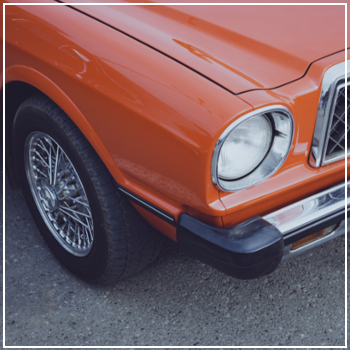Addressing Rust with Classic & Vintage Cars
 Rust is one of the biggest challenges when it comes to owning or restoring an antique or classic car. What was once a gleaming chrome finish or a perfect paint job can quickly turn into a patchwork of corrosion and damage, making repairs both time-consuming and costly.
Rust is one of the biggest challenges when it comes to owning or restoring an antique or classic car. What was once a gleaming chrome finish or a perfect paint job can quickly turn into a patchwork of corrosion and damage, making repairs both time-consuming and costly.
Back in the day, many vintage and classic cars were built with materials that weren’t as rust-resistant as today’s modern vehicles. For example, cars from the 1950s to the 1970s often used 22-gauge steel without any zinc coating, which made them highly susceptible to rust. Even if they were stored properly, these cars could start corroding within just a few years. This means that many collectors and restorers face the daunting task of bringing these old beauties back to life—sometimes from the ground up.
Common Types of Rust Found on Classic Cars
If you're looking to restore an older vehicle, it's important to understand the different types of rust you might encounter:
- Surface Rust: This is the most common type and usually appears as a light layer of oxidation on the car’s surface. It can develop even if the car was well-maintained, especially if moisture got trapped under the paint or in crevices.
- Pitting or Scale Rust: When rust penetrates below the surface, it can cause small pits or flaking. While this type of damage is more serious, it can often be fixed by sanding and repainting.
- Structural Rust: This is the most dangerous form, as it weakens the metal and can lead to holes or structural failure. If you see rust through the body panels, especially around the doors, wheel wells, or frame, it may require replacement rather than repair.
When evaluating a classic car for purchase or restoration, always inspect it thoroughly for signs of rust. Even minor issues can escalate over time, leading to expensive repairs down the line.
How to Prevent Rust on Your Classic Car
Maintaining a classic car requires extra care, especially when it comes to preventing rust. Here are some tips to help keep your vehicle in top condition:
- Fix any dents or scratches immediately. Even small damages can allow moisture to get in and start the rusting process.
- Avoid storing your car under plastic covers. Instead, use breathable tarps or store it in a dry, enclosed garage with proper dehumidification.
- Clean and wax your car regularly. Make sure to dry all areas completely before putting it back in storage.
- Check for rust in high-risk areas like wheel wells, under the car, and around seams. These spots are more prone to moisture buildup.
- If you find rust, don't just paint over it. Proper rust removal is essential before applying primer and paint. Always plan ahead for color matching if you're doing the work yourself.
If you’re in the market for professional help with your classic car, DaSilva’s Auto Body offers expert restoration and rustproofing services. Whether you need a full restoration or just a few repairs, we’re here to help protect your investment and bring your dream car back to life. Contact us today to schedule a consultation or learn more about our services.
Tower Packing,Distillation Column Packing Material,Ceramic Saddles Tower Packing,Tower Packing Types
Ningbo Cijie Chemical Equipment Co., Ltd. , https://www.chemicaltower.com